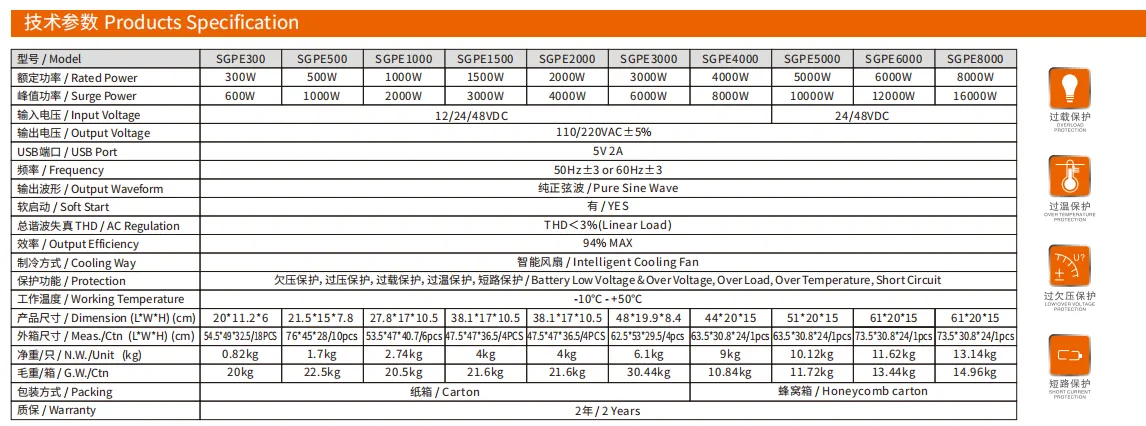10kw solar panel size
Understanding the Size of a 10 kW Solar Panel System
As the world continues to shift toward renewable energy sources, solar power stands out as a leading alternative for residential and commercial energy needs. One of the most commonly discussed solar installations is the 10 kW solar panel system. Understanding the size of such a system is crucial for potential buyers seeking to harness solar energy effectively.
A 10 kW solar panel system refers to the capacity of the installation; specifically, it can produce up to 10 kilowatts of power under optimal conditions. To achieve this capacity, the size of the solar panels and the total number of panels needed must be considered. Typically, individual solar panels generate between 250 to 400 watts each. Thus, to create a 10 kW system, one would need around 25 to 40 panels, depending on the specific wattage of each panel chosen.
Dimensions of Individual Solar Panels
Most solar panels on the market today have standard dimensions. A typical solar panel measures about 65 inches by 39 inches (or approximately 1.65 meters by 1 meter) and has an area of around 17.5 square feet (1.63 square meters). With these specifications, a complete 10 kW solar system would require a significant amount of space.
To calculate the total area needed for a 10 kW solar system, consider that if you were to use panels with an output of 300 watts each (a common size), you would need about 34 panels. The total area would then be the number of panels multiplied by the area of each panel. For example
- Number of panels 34 - Area of each panel 17.5 square feet - Total area needed = 34 panels x 17.5 square feet = 595 square feet
This estimate indicates that you would need approximately 595 square feet of roof space or ground space to install a 10 kW solar panel system.
Factors Affecting Solar Panel Size and Installation
10kw solar panel size

While the above calculations provide a clear idea of the physical space required, several additional factors can influence the overall size and configuration of a solar installation
1. Roof Orientation and Angle The angle and direction of the roof can affect how many solar panels can be installed and their efficiency. South-facing roofs typically receive the most sunlight, making them ideal for solar installations.
2. Shading Buildings, trees, and other obstructions can cast shadows on solar panels, reducing their efficiency. Ensuring that the panels are placed in a location with minimal shading is crucial for optimal energy production.
3. Type of Solar Panels Different solar panel technologies, such as monocrystalline, polycrystalline, and thin-film, vary in their efficiency and size. For instance, monocrystalline panels tend to have higher efficiency rates and may produce more power in a smaller footprint compared to other types.
4. Local Climate The amount of sunlight your location receives throughout the year will also dictate system performance. Areas with more sunlight may require fewer panels to achieve the same power capacity as areas with less sun exposure.
Conclusion
Installing a 10 kW solar panel system can be an excellent investment for those looking to reduce their carbon footprint and energy costs. However, understanding the size and spatial requirements is essential for planning an effective installation. With approximately 595 square feet needed for the system, it’s vital to evaluate your space carefully in conjunction with local regulations and conditions.
Finally, consulting with solar energy professionals can help prospective buyers optimize their installations for performance and efficiency, ensuring a successful transition to renewable energy. Solar panels represent a sustainable choice, emphasizing the importance of understanding their size and configuration in making an informed decision about solar energy systems.
-
Understanding the Advantages of Solar String Inverters for Your Energy SystemNewsApr.29,2025
-
Choosing the Right PV Inverter: A Comprehensive GuideNewsApr.29,2025
-
The Future of Solar Power: Exploring Bifacial Solar PanelsNewsApr.29,2025
-
The Complete Guide to Solar Panels: Efficiency, Cost, And InstallationNewsApr.29,2025
-
The Best Options for Efficiency and Cost-EffectivenessNewsApr.29,2025
-
Harnessing the Power of Off-Grid Solar Inverters for Energy IndependenceNewsApr.29,2025







